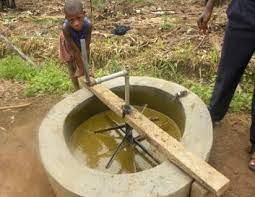What is the role of biomass in rural households in the country?
- The role of biomass in rural households within a country can vary significantly based on factors such as cultural practices, geographical location, availability of modern energy sources, and economic conditions.
- Biomass refers to organic materials such as wood, crop residues, animal dung, and other plant-based materials that can be used as fuel for cooking, heating, and other energy needs.
- In many rural areas, especially in developing countries, biomass continues to play a significant role in daily life due to a variety of reasons:

Cooking Fuel
- In areas where modern energy sources like electricity or clean-burning fuels (such as LPG or natural gas) are scarce or expensive, biomass remains a primary source of cooking fuel.
- Rural households often rely on traditional methods such as open fires or simple stoves that burn wood, agricultural residues, and animal dung.
Water Heating
- Biomass is also used for space heating in colder regions where other heating options may not be readily available or affordable.
- People might use biomass for heating their homes during the winter months.
Cultural and Traditional Practices:
- In many rural communities, using biomass for cooking and heating is deeply ingrained in cultural and traditional practices. These practices can be resistant to change, even when alternative energy sources are introduced.
Economic Reasons:
- Biomass can be a cost-effective energy source, especially in areas where commercial energy sources are expensive or inaccessible.
- It’s often obtained locally, reducing the need for purchasing fuel.
Lack of Infrastructure:
- In remote rural areas, infrastructure for transporting and distributing modern energy sources might be lacking.
- As a result, biomass remains a readily available and practical option.
What is the Negative Impact of Biomass Energy on the Rural Side
However, the heavy reliance on biomass for energy in rural households can have several negative impacts:
Health Issues:
- Traditional biomass burning generates indoor air pollution, leading to respiratory diseases and other health problems for household members, particularly women, and children who spend more time indoors.
Environmental Degradation:
- Unsustainable harvesting of biomass can lead to deforestation, soil erosion, and loss of biodiversity. Over-reliance on biomass can contribute to land degradation and other environmental issues.
Time and Labor Intensive:
- Collecting biomass can be time-consuming and labor-intensive, particularly for women and children who are often responsible for gathering fuel.
- This detracts from other productive activities and educational opportunities.
What is biomass in rural areas?
in rural areas, biomass refers to a wide range of organic materials that are used for various purposes, primarily as a source of energy. These materials are often derived from plants, trees, and agricultural activities. Here are some common types of biomass used in rural areas:
Wood
- Wood is one of the most traditional and widely used forms of biomass in rural areas.
- It is used for cooking, heating, and sometimes even for small-scale electricity generation.
Agricultural Residues:
- Crop residues such as straw, husks, stalks, and shells left over after harvesting crops like rice, wheat, maize, and sugarcane can be used as biomass.
- They are often burned for heat or cooking fuel.
Animal Dung for Biogas plant
- Animal dung, especially from livestock like cows, buffaloes, and goats, is used as a source of fuel for cooking and heating.
- It is often collected, dried, and formed into cakes or patties before being burned.

Forest Residues:
- Residues from forestry activities, such as branches, leaves, and small logs that are not suitable for timber, can be used as biomass for various purposes, including heating and cooking.
Agro-Industrial Residues:
- Byproducts from agro-industrial processes, like rice husks, coconut shells, and sugarcane bagasse, are used as biomass.
- These residues are often used for energy generation in small-scale power plants.

Grass and Reed:
- In some rural areas, grasses and reeds are collected and used as biomass for cooking and heating.
- They are typically abundant in wetlands and marshy areas.
Charcoal:
- Charcoal is produced by heating biomass materials in the absence of oxygen, a process known as pyrolysis.
- It is a more energy-dense form of biomass and is commonly used as a cooking fuel.
Crop Cultivation Waste:
- Waste materials from crop cultivation, such as pruning residues, weeds, and other plant debris, can also be utilized as biomass for energy purposes.
Aquatic Plants
- In regions with water bodies, aquatic plants like water hyacinth and water lilies are sometimes harvested and used as biomass for energy.
What is the best Biomass for Rural areas?
- The choice of the best biomass for a specific rural area depends on the local context, including the availability of resources, the infrastructure for processing and using biomass, the environmental impact, and the potential to enhance energy access and improve local livelihoods.
- It’s essential to consider all these factors and conduct a thorough assessment before deciding on the optimal biomass source for a particular rural community. Sustainable management practices and technology adaptation can further enhance the benefits of biomass use in rural areas.

- The following are the best biomass sources based on high energy per unit mass
- Cow dung for biogas plant
- Biomass pellet
- Biomass briquette
Scope of biomass pellets in Rural Areas
What is Indian Government Scheme for Biomass Energy
- As of my last knowledge update in September 2021, the Indian government had several schemes and initiatives to promote biomass energy and its sustainable utilization.
- Please note that the details and availability of these schemes may have changed since then, so I recommend checking with official government sources or the Ministry of New and Renewable Energy (MNRE) for the most up-to-date information.
- Here are some of the key schemes and initiatives related to biomass energy in India:
Biomass Power and Bagasse Cogeneration Program:
Financial incentives, subsidies, and support mechanisms are provided to encourage the setting up of biomass power projects and cogeneration facilities
- This program is administered by the Ministry of New and Renewable Energy (MNRE).
- It aims to promote the generation of electricity from biomass sources, including crop residues, forest residues, and agricultural waste, as well as bagasse from sugarcane processing.
National Biomass Cookstove Initiative (NBCI):
- NBCI is a scheme under the MNRE that focuses on promoting the use of improved biomass cookstoves.
- The goal is to replace traditional and inefficient cookstoves with cleaner and more energy-efficient biomass stoves, reducing indoor air pollution and promoting sustainable biomass use.
Biogas Upgradation and Bottling:
- The MNRE has initiatives to promote the production of biogas from organic waste and its purification for use as clean cooking fuel and transportation fuel.
- It also supports the establishment of biogas bottling plants.
National Mission on Oilseeds and Oil Palm (NMOOP):
- NMOOP is a government initiative that supports the cultivation of oilseeds, including non-edible oilseeds like Jatropha and Pongamia, which can be used for biodiesel production.
- The mission aims to reduce the country’s dependence on imported oil and promote the sustainable cultivation of oilseed crops.
Support for Research and Development:
- The Indian government provides support for research and development projects related to biomass energy and biofuels.
- Funding is often available for research institutions, universities, and companies working on innovative technologies and solutions in this field.
Renewable Purchase Obligation (RPO):
- RPO mandates that a certain percentage of electricity consumed by utilities in India must come from renewable energy sources, including biomass.
- This policy has been a driver for the growth of biomass power generation in India.
State-Level Incentives:
- Many Indian states also offer their own incentives and schemes to promote biomass energy projects, often in alignment with national policies.
- Please be aware that the specific details, eligibility criteria, and availability of these schemes may vary from one year to another and from one state to another.
- It’s advisable to visit the official MNRE website or contact relevant government agencies for the latest information on biomass energy schemes in India.
Conclusion
- The goal is to reduce the negative impacts of biomass use while respecting local customs and needs.
- Transitioning to cleaner energy sources can improve health, reduce environmental degradation, and enhance overall living conditions for rural households.
- Biomass briquettes, like pellets, contribute to reducing the environmental impact of traditional biomass burning while providing a sustainable and efficient energy source, particularly in rural and off-grid areas.
- Many Indian government schemes have implemented biomass energy.
Reference
- Government of India, Ministry of New and Renewable Energy, MNRE website
